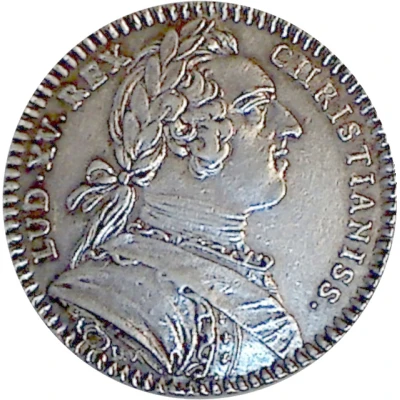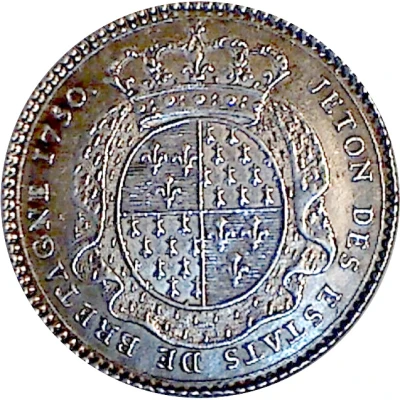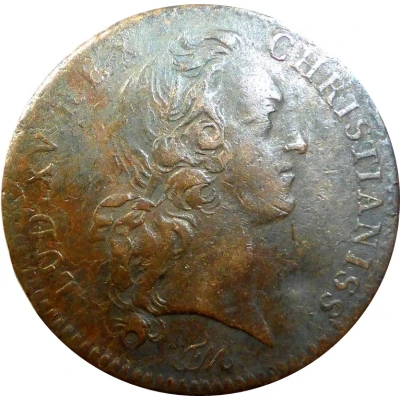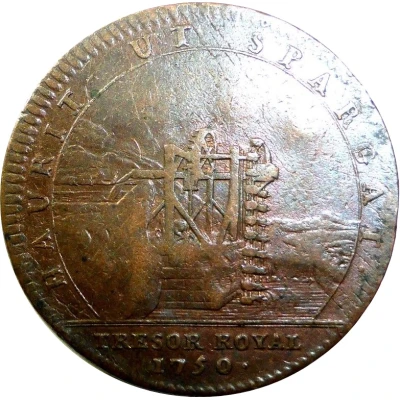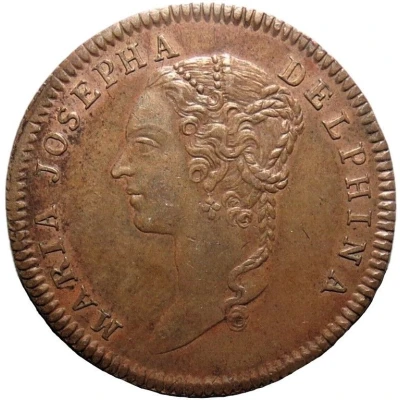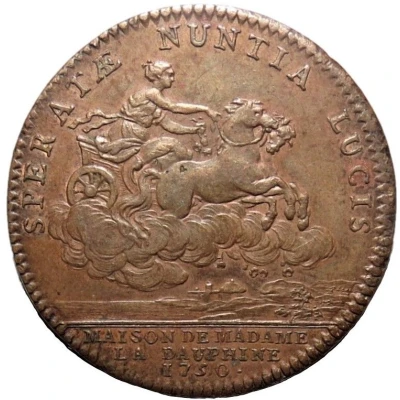Reverse
Crowned shield quartered with 1 and 4 of France, with 2 and 3 of Brittany, on a mantle sown with fleurs-de-lis and ermines .
Script: Latin
Lettering: JETON DES ESTATS DE BRETAGNE 1750.
Edge
Milled
Comment
Of all the French provinces, Brittany was the one where the monarchy best respected local privileges and particularities. Its union only dated from 1532, and its states were the most turbulent in the kingdom. Their agreement was necessary for the levying of all monies and the execution of all edicts, even sovereign ones. They were held every two years. All three orders were represented, with bishops, abbots, town representatives and, above all, numerous nobles (six to seven hundred) who generally imposed their will on the others, although voting was by order. The nobles and hobereaux formed what was known as the "bastion", tyrannizing the rest of the assembly and attracted above all by feasts and meals. The main resource of the provincial budget was provided by "duties", a highly productive tax on beverages, as well as the "fouage" or fire tax. Despite these revenues, the administration of the Estates of Brittany was nevertheless costly, and on the eve of the Revolution, the Estates were fifty million livres in debt. The Estates made around 150 different tokens, to be given to the members of its administration as bonuses: 100 for each president, 50 for each auditor, etc.
This is an automatic translation. The original text is:
La Bretagne fut, de toutes les provinces françaises, celle où la monarchie respecta le mieux les privilèges et particularismes locaux. Son union ne datait que de 1532 et ses États étaient les plus turbulents du royaume. Leur accord était nécessaire pour toute levée de deniers et l'exécution de tous les édits même souverains. Ils se tenaient tous les deux ans. Les trois ordres y étaient représentés avec des évêques, des abbés, des représentants des villes et surtout de nombreux nobles (six à sept cents) qui imposaient en général leur volonté aux autres, bien que le vote se fit par ordre. Les nobles et hobereaux formaient ce que l'on appelait le "bastion", tyrannisant le reste de l'assemblée et étaient surtout attirés par les fêtes et les repas. La principale ressource du budget provincial était fournie par les "devoirs", impôt sur les boissons très productif mais aussi le fouage ou taille sur le "feu". Malgré ces revenus, l'administration des États de Bretagne était néanmoins coûteuse et à la veille de la Révolution, les États sont endettés de cinquante millions de livres. Les États ont fabriqué environ 150 jetons différents, destinés à être offerts aux membres de son administration à titre de gratification : 100 pour chaque président, 50 pour chaque vérificateur
